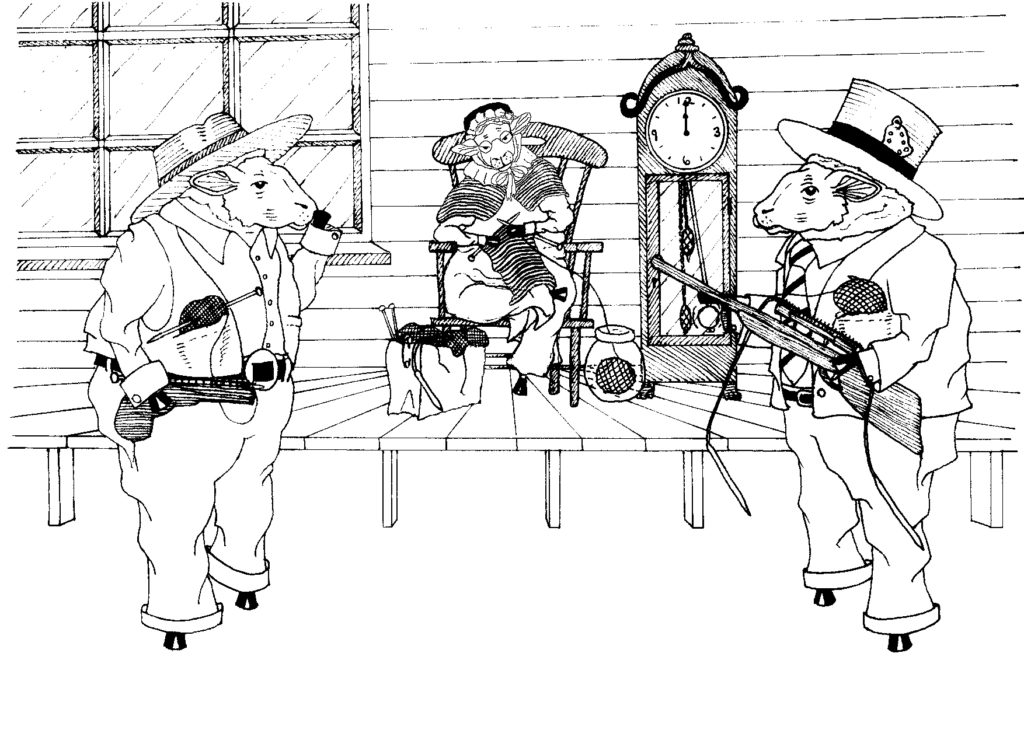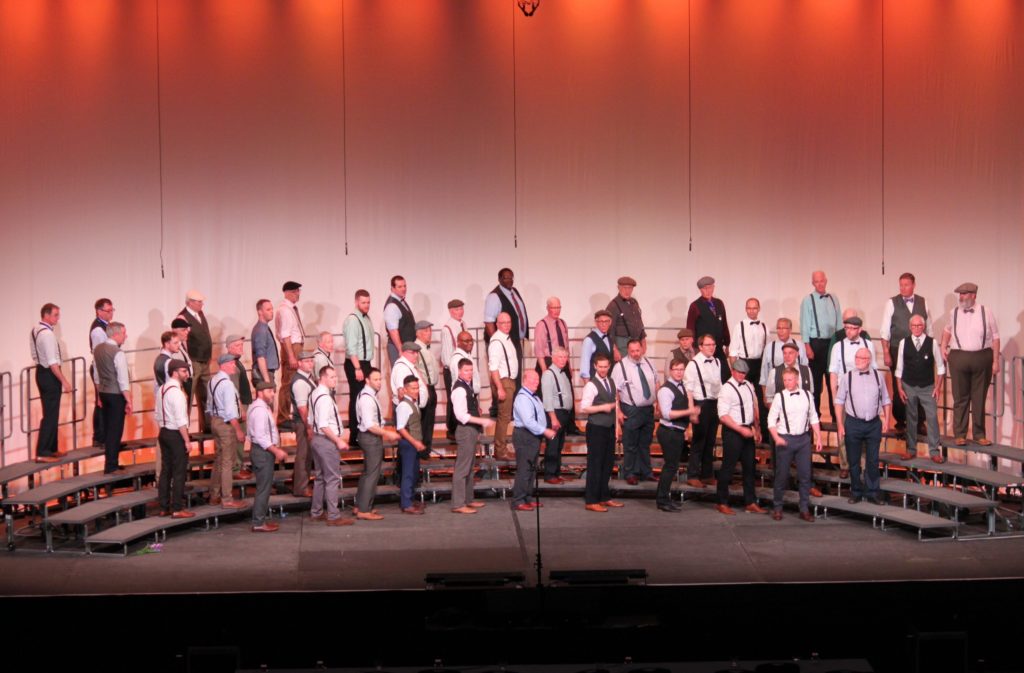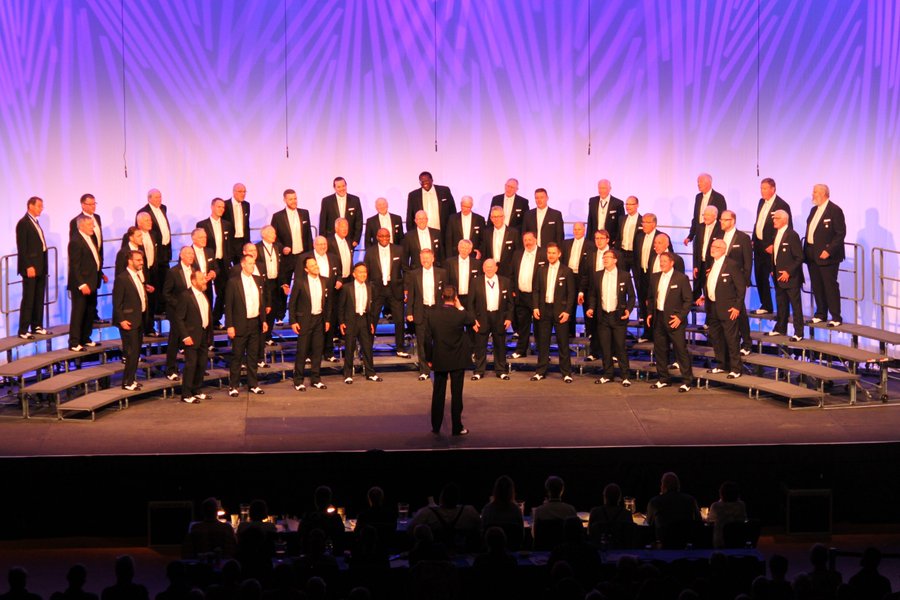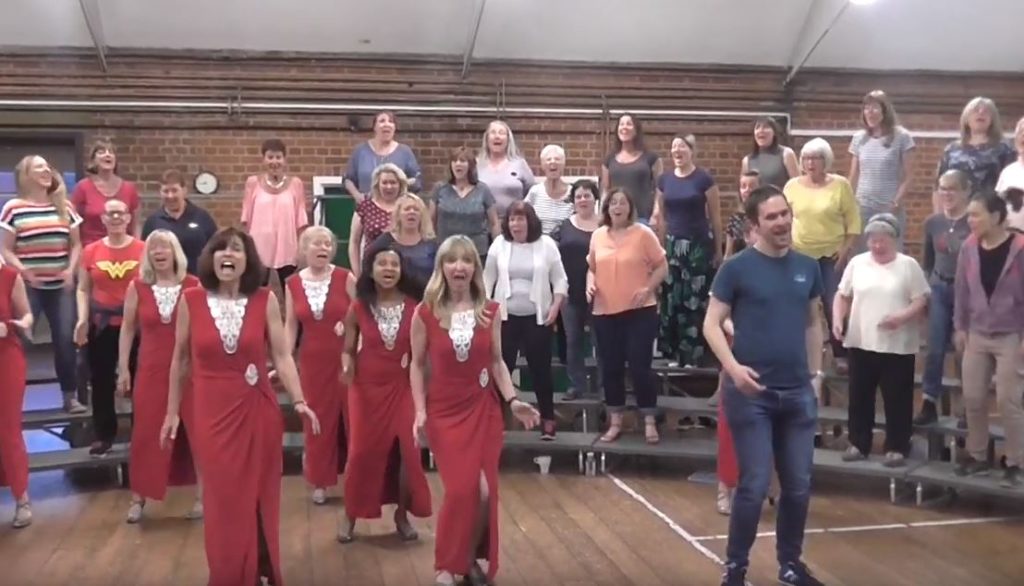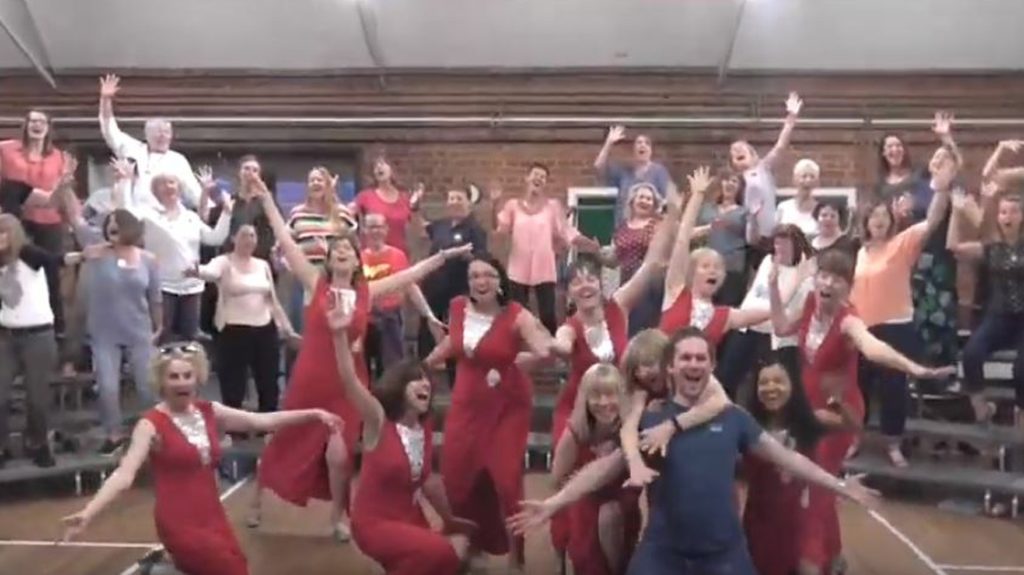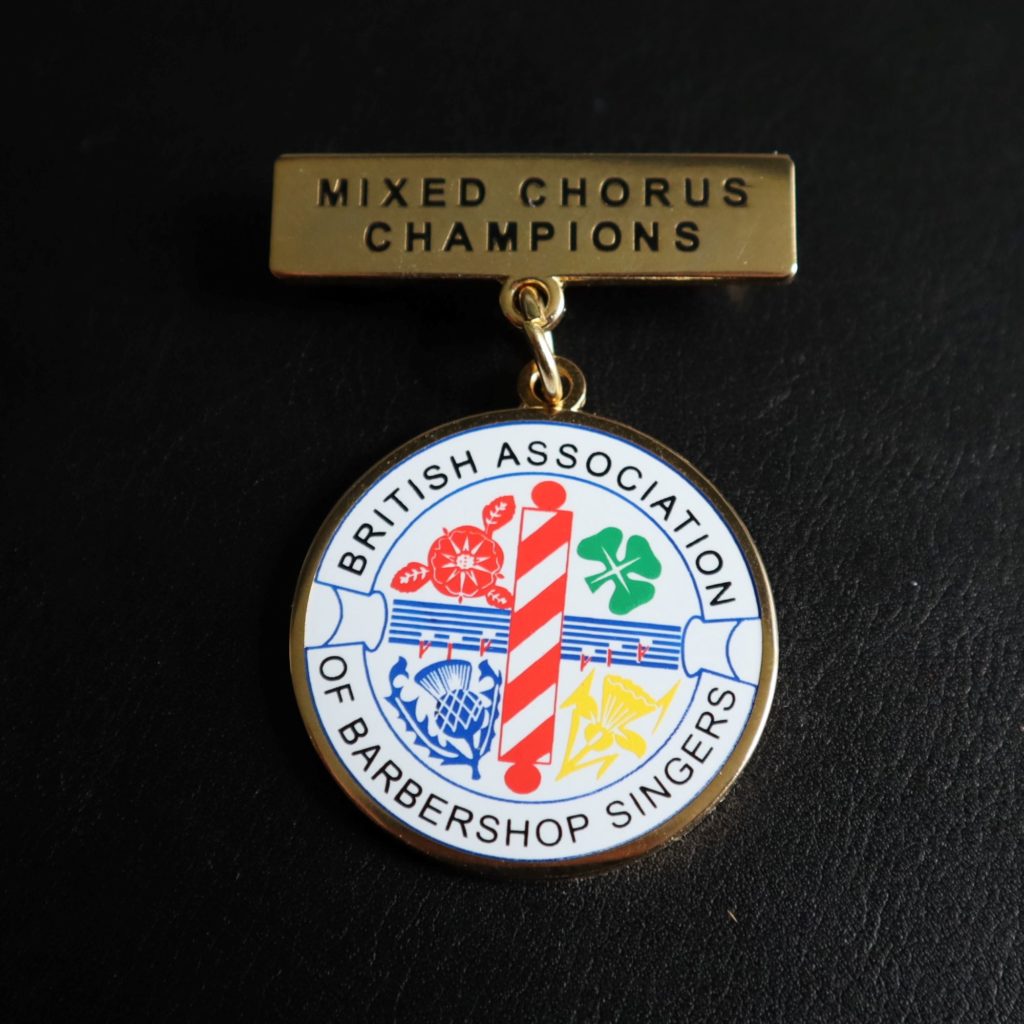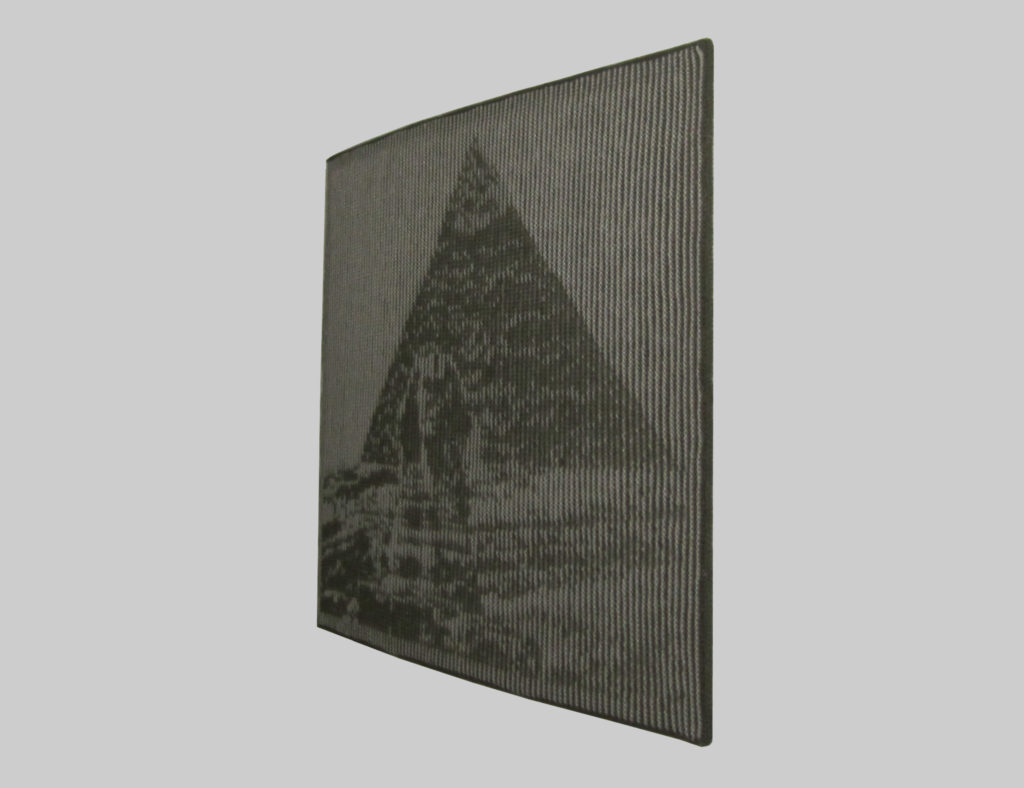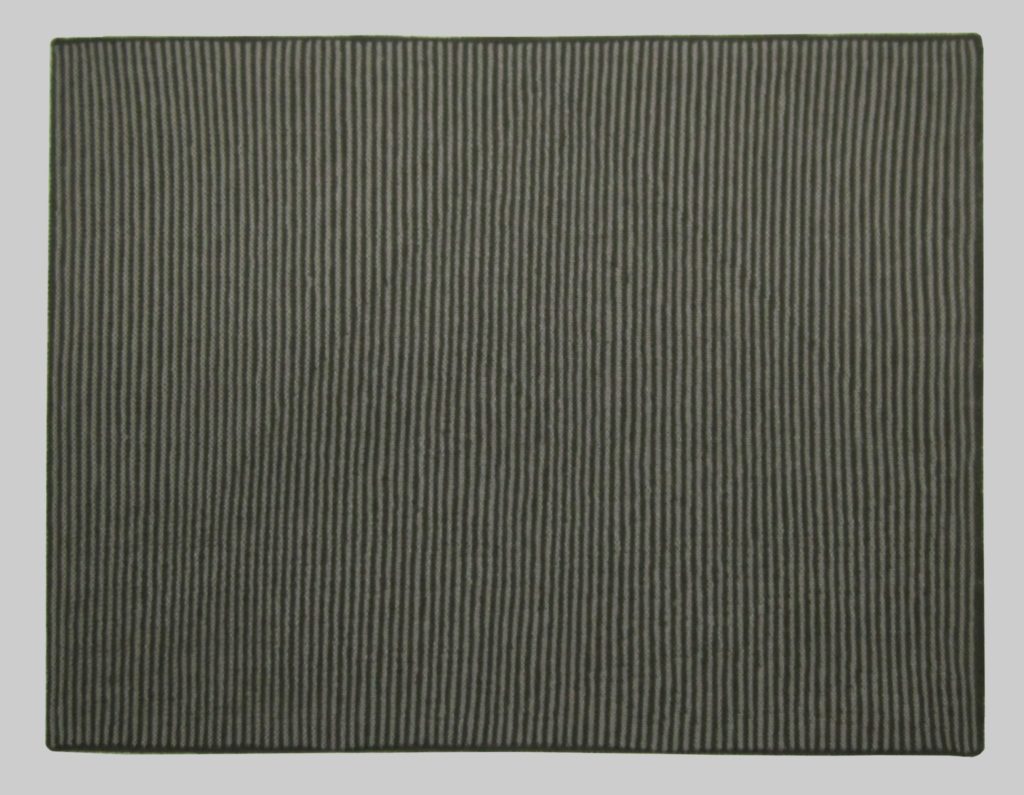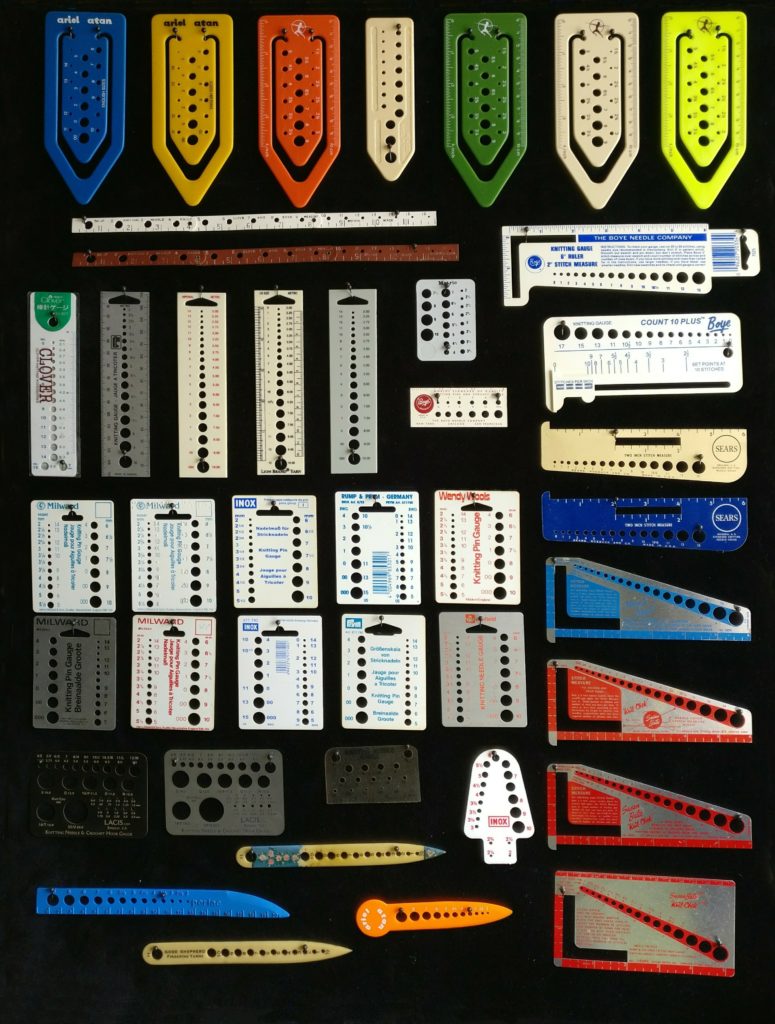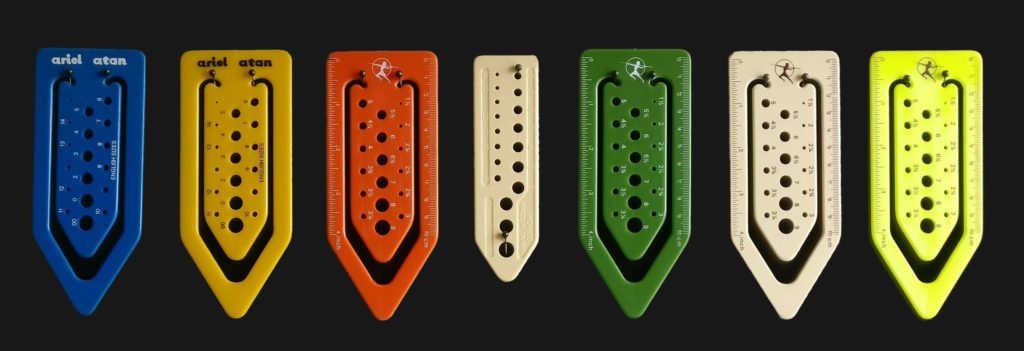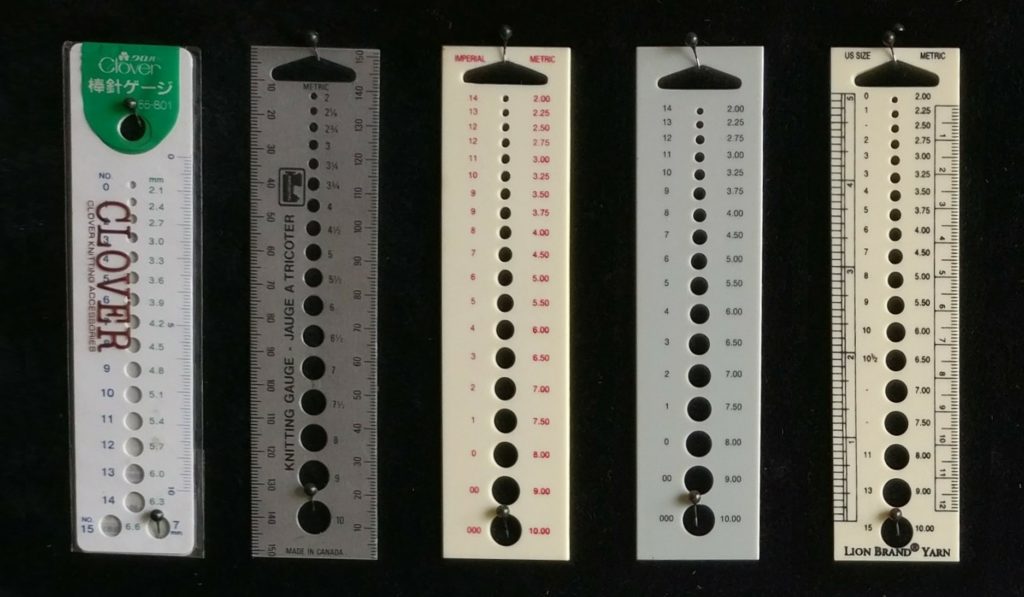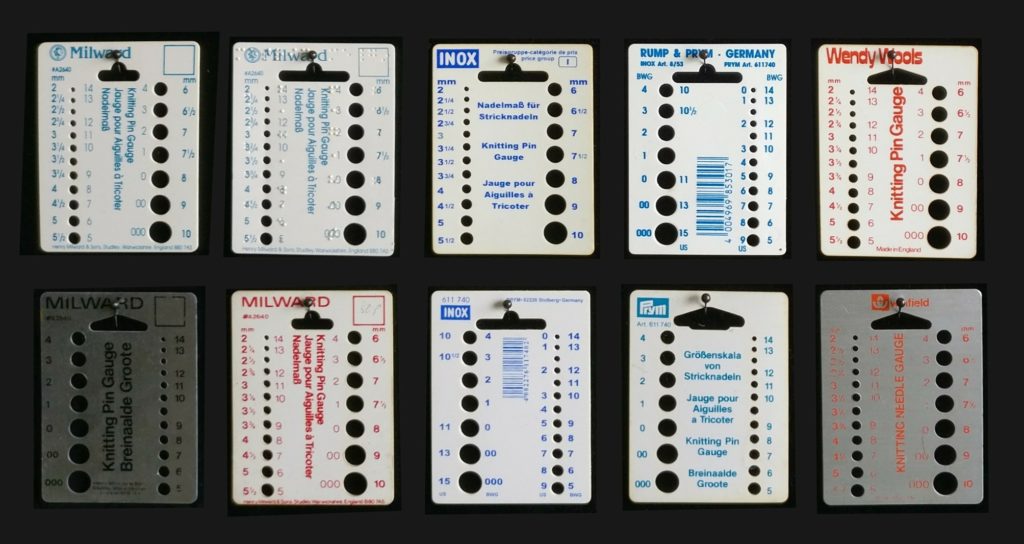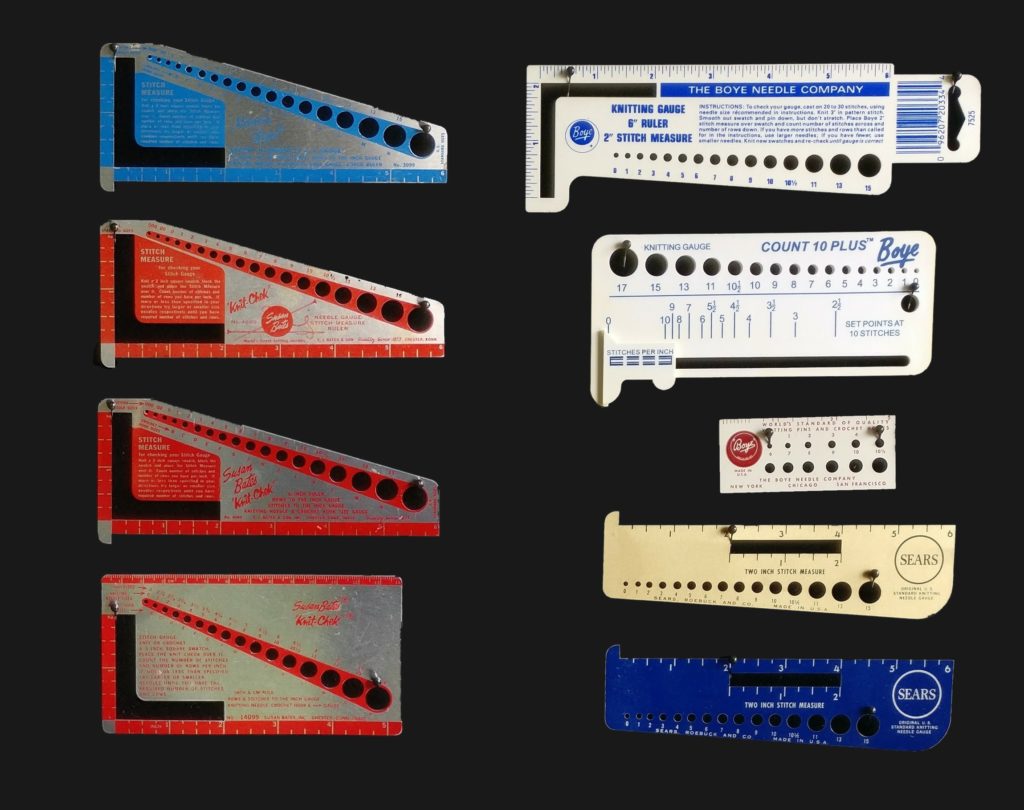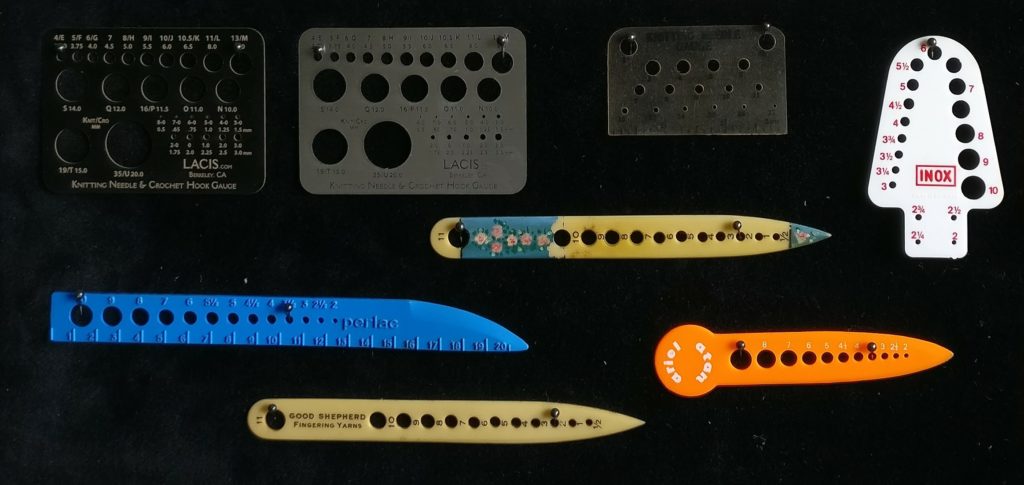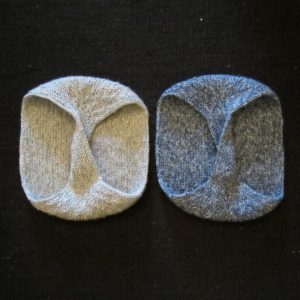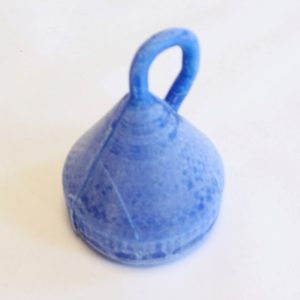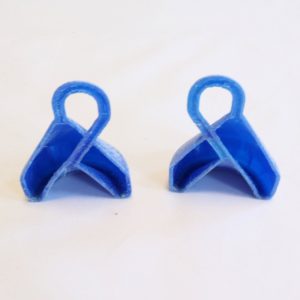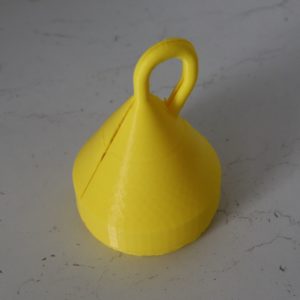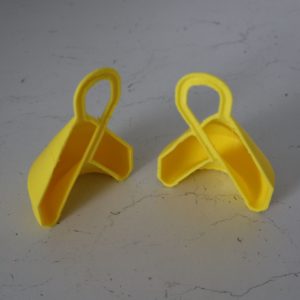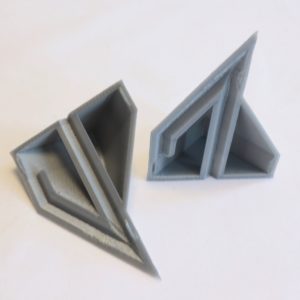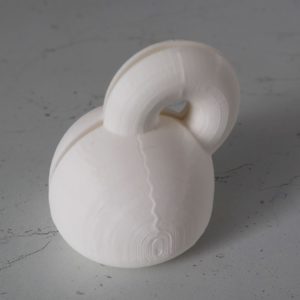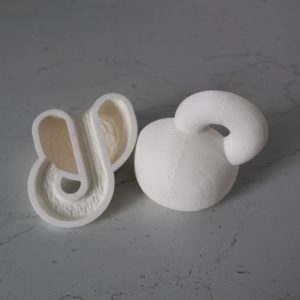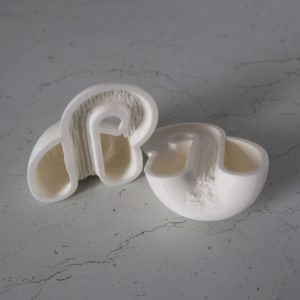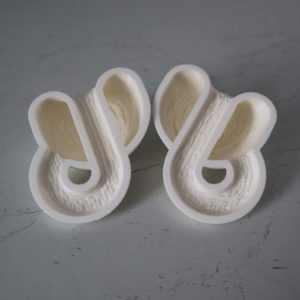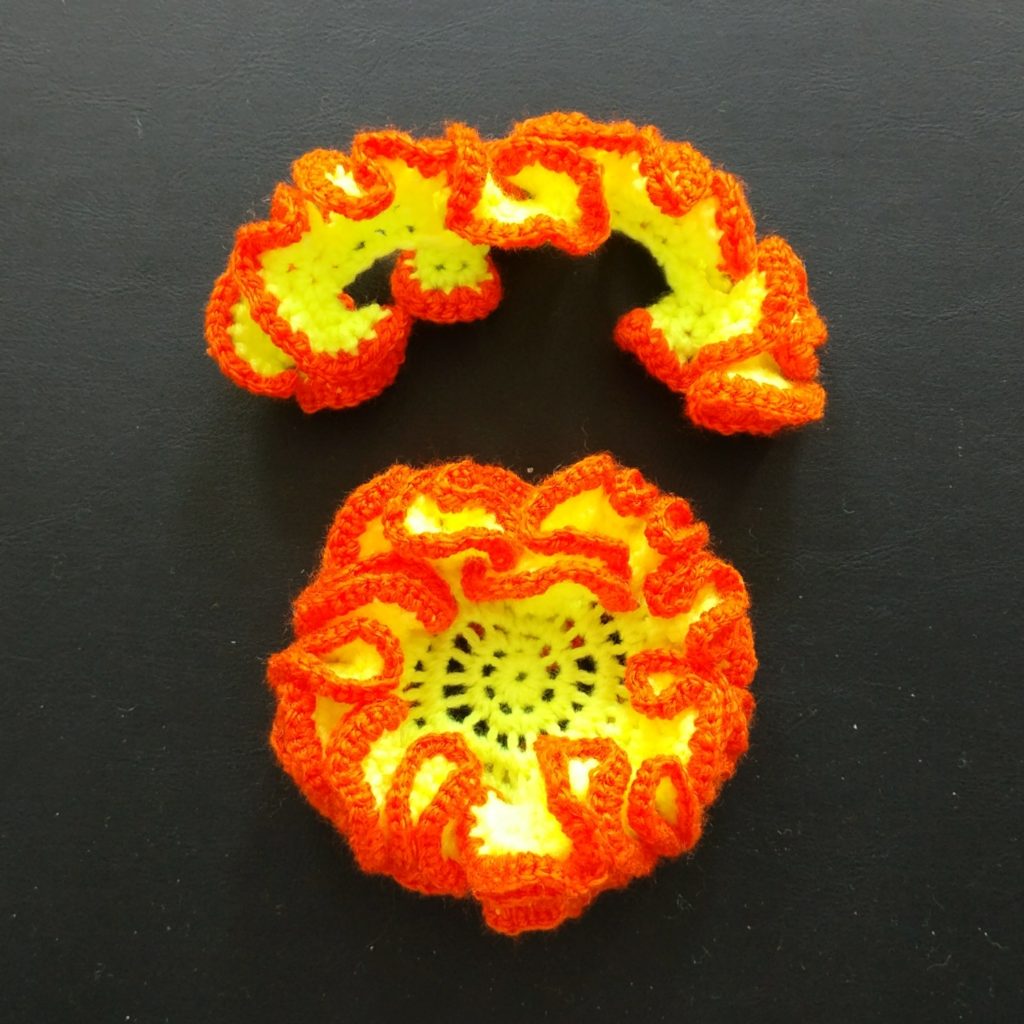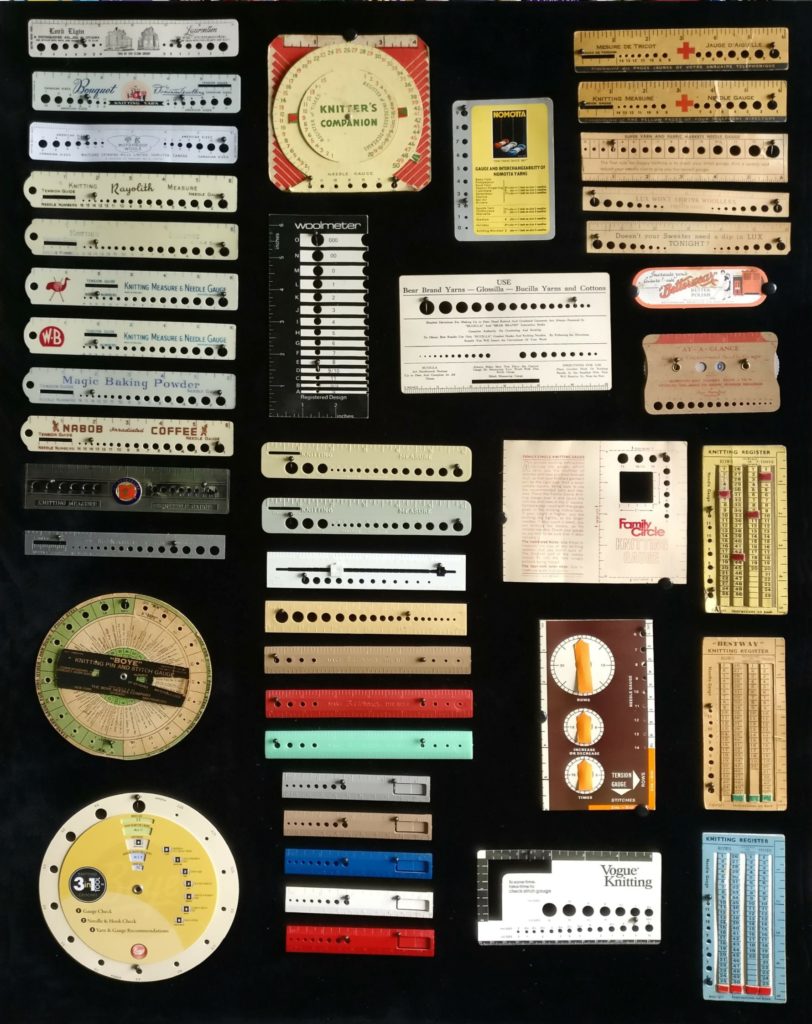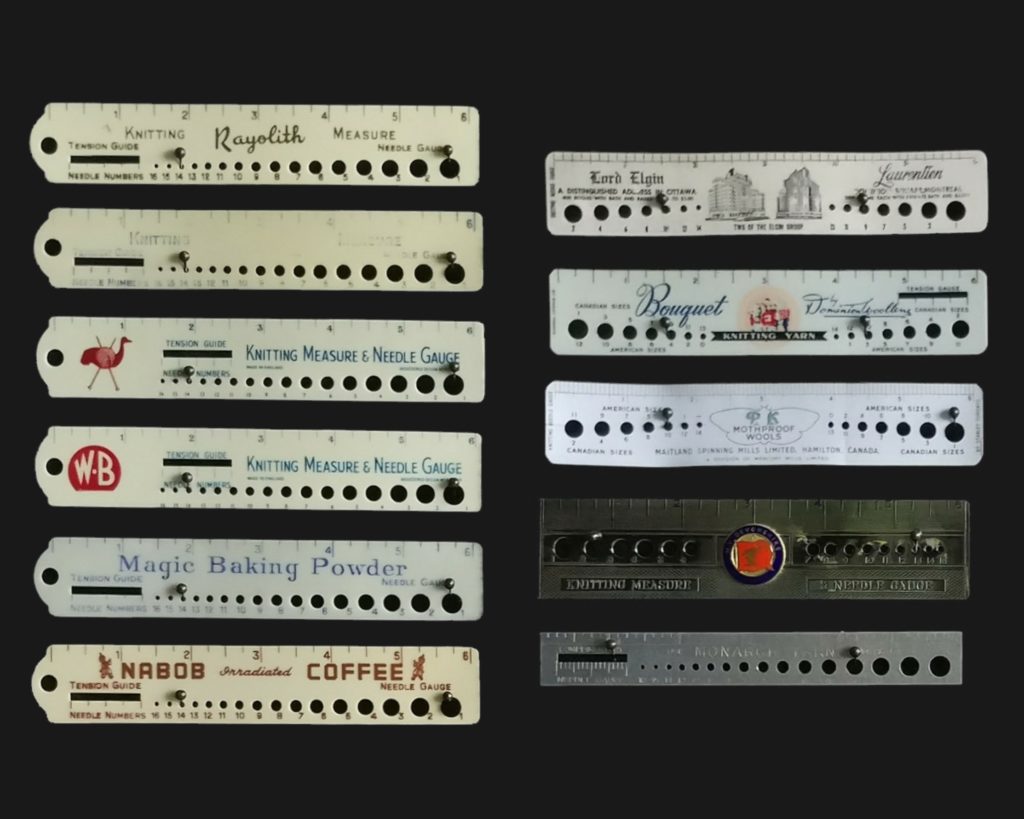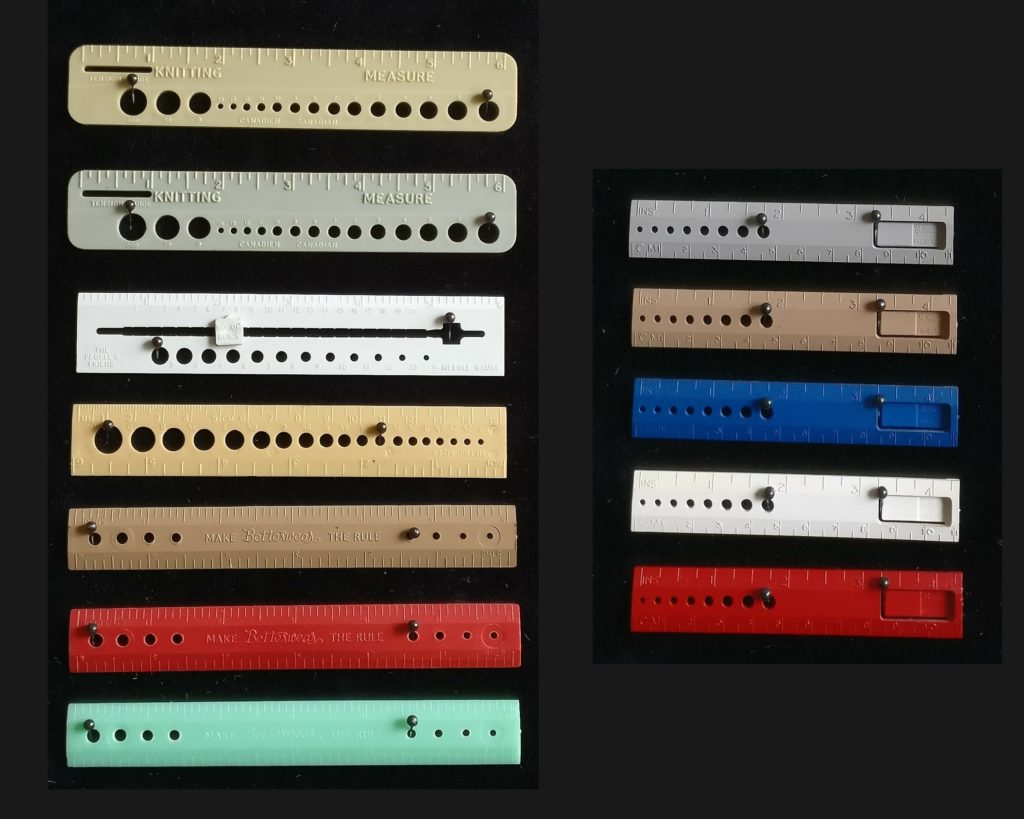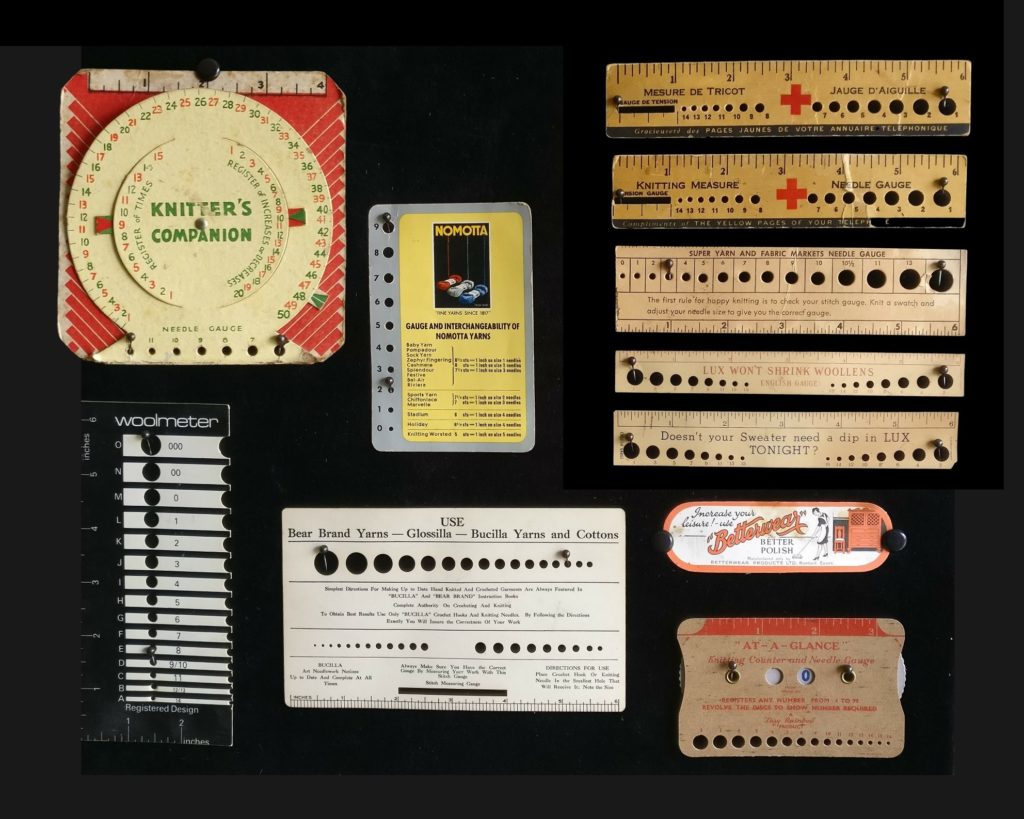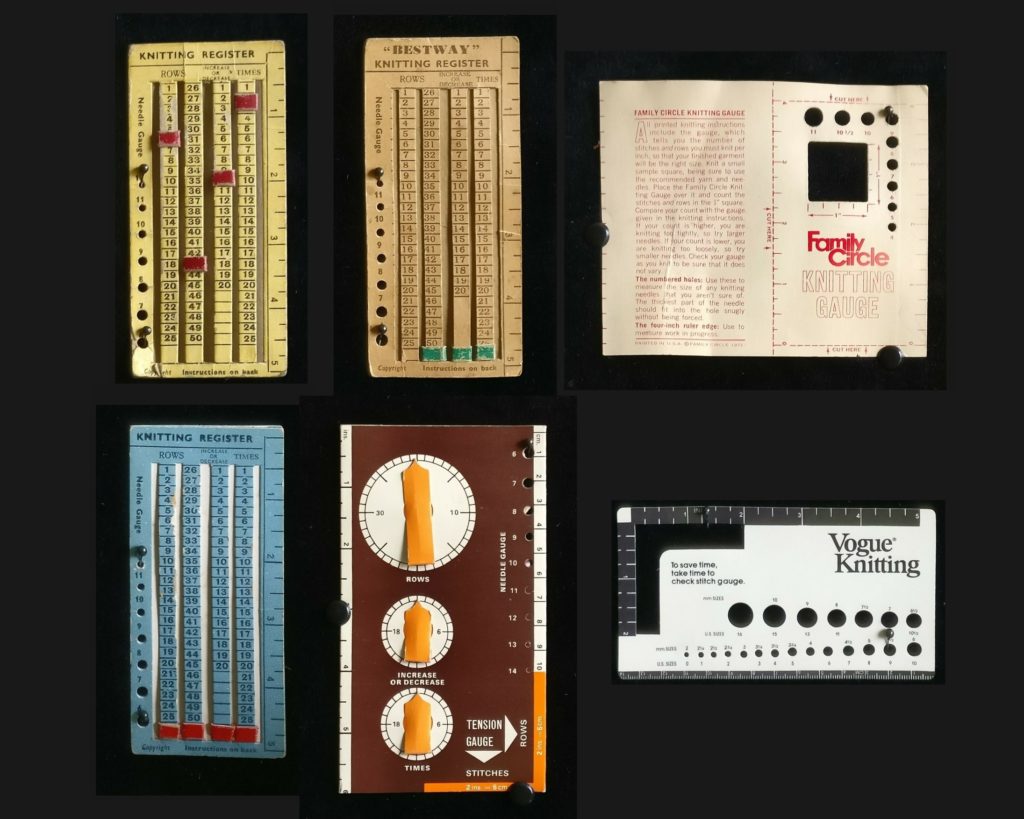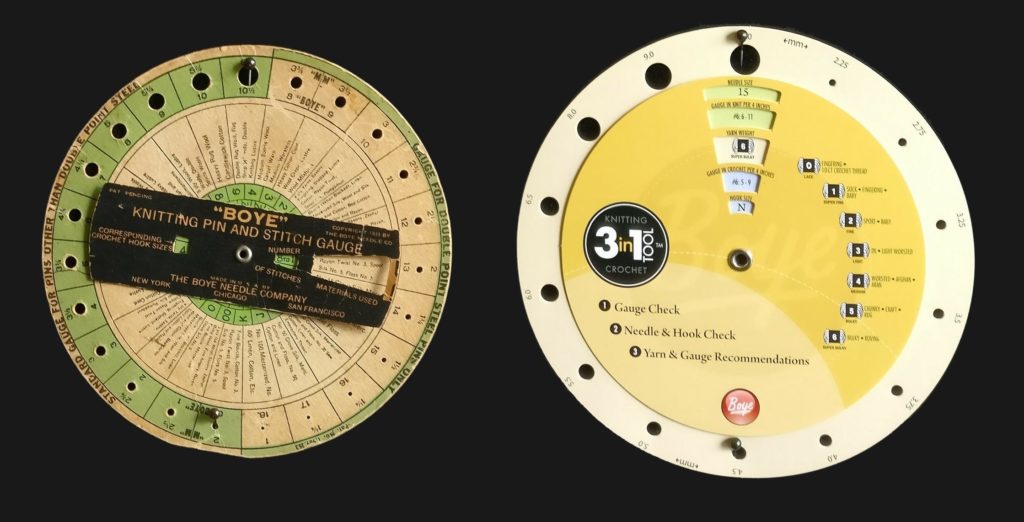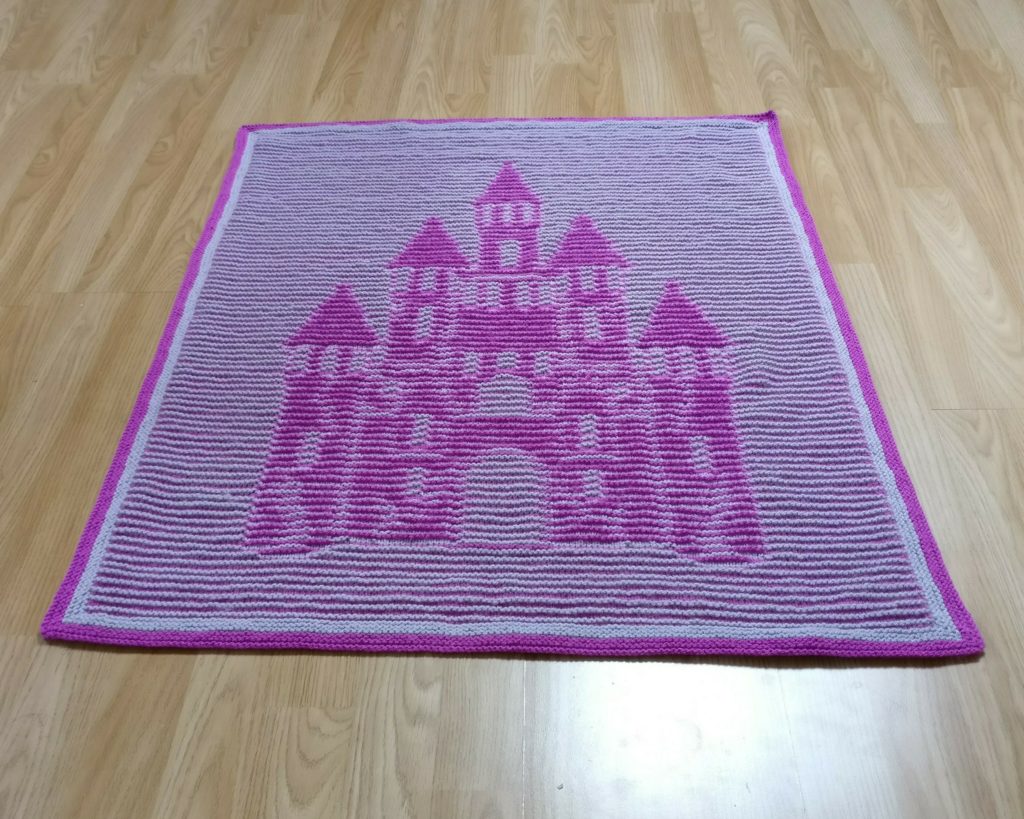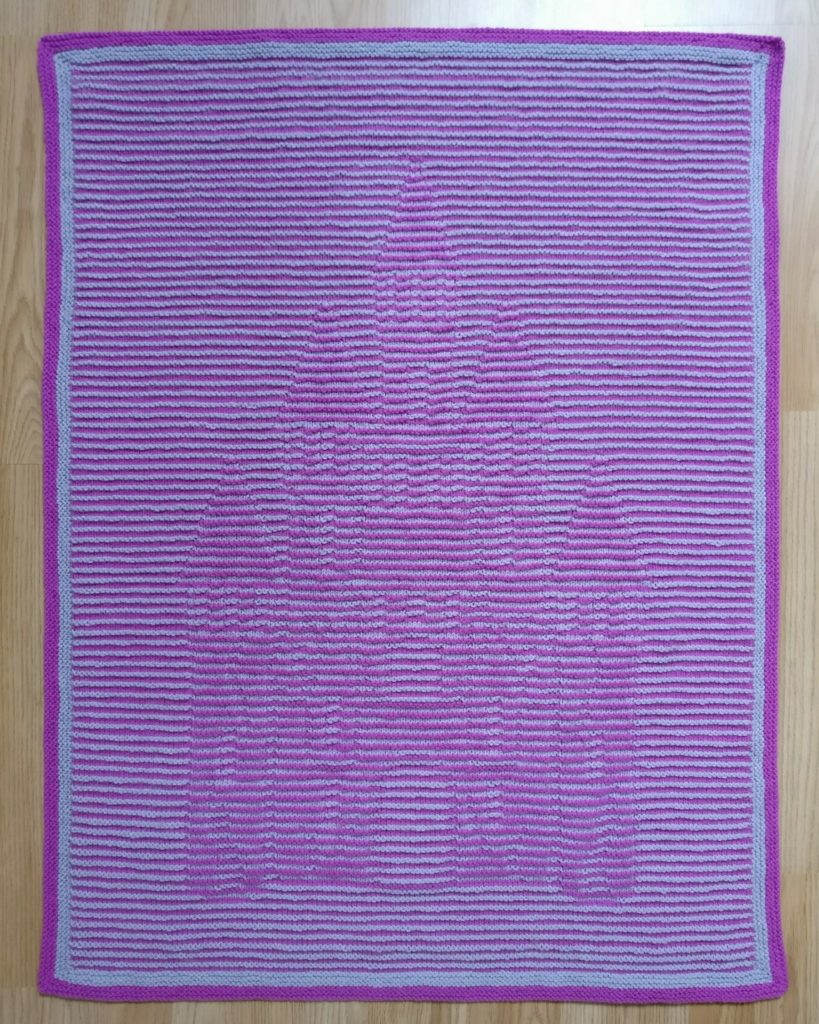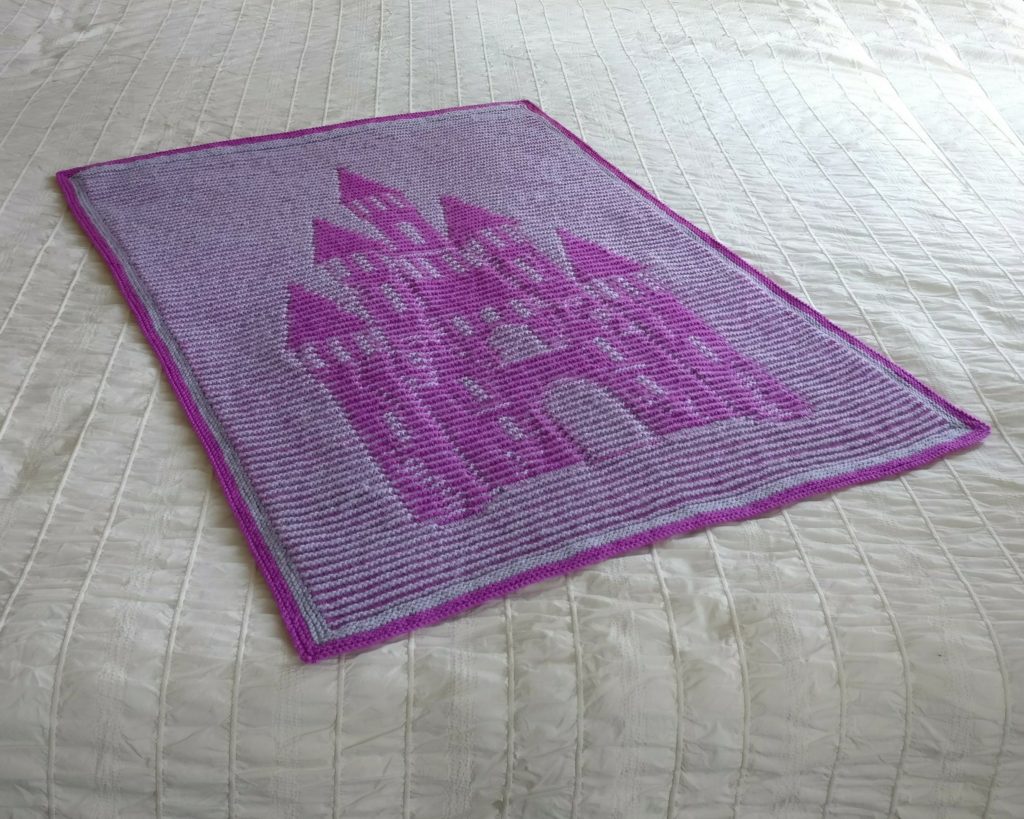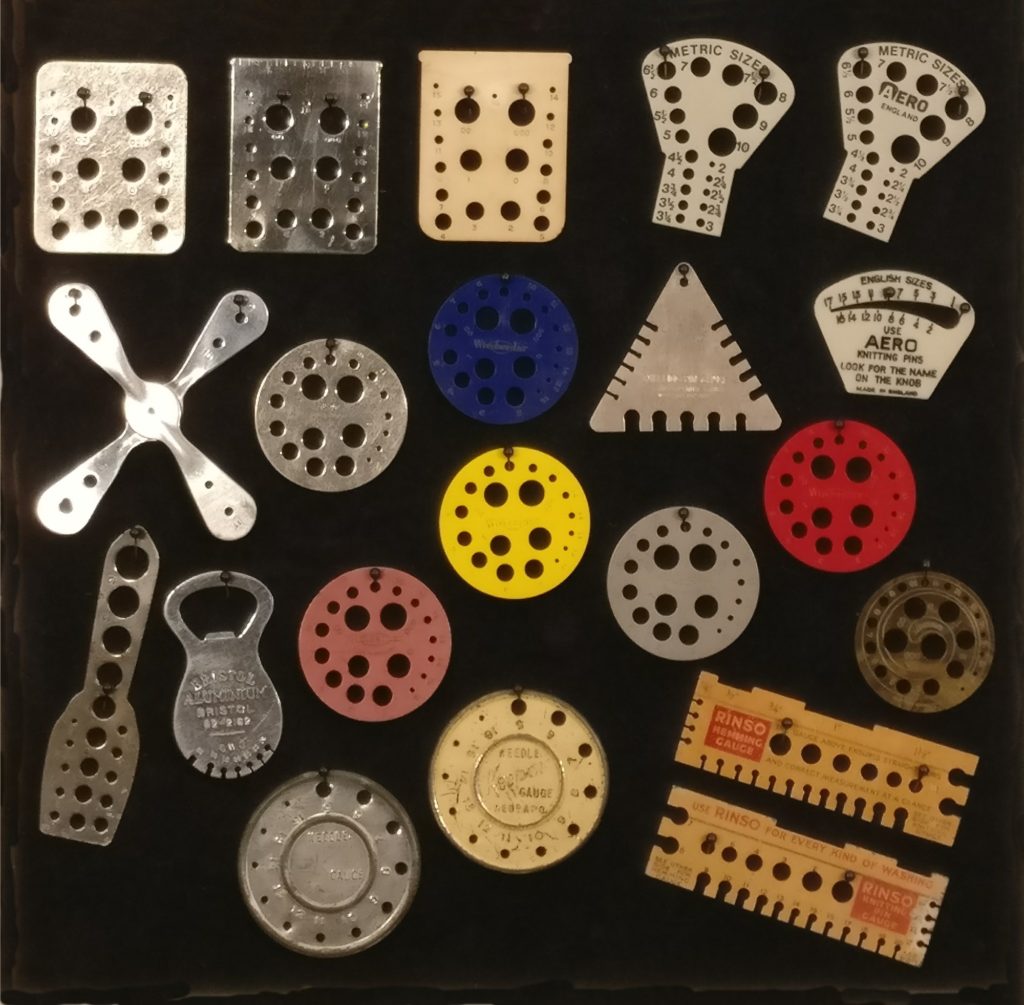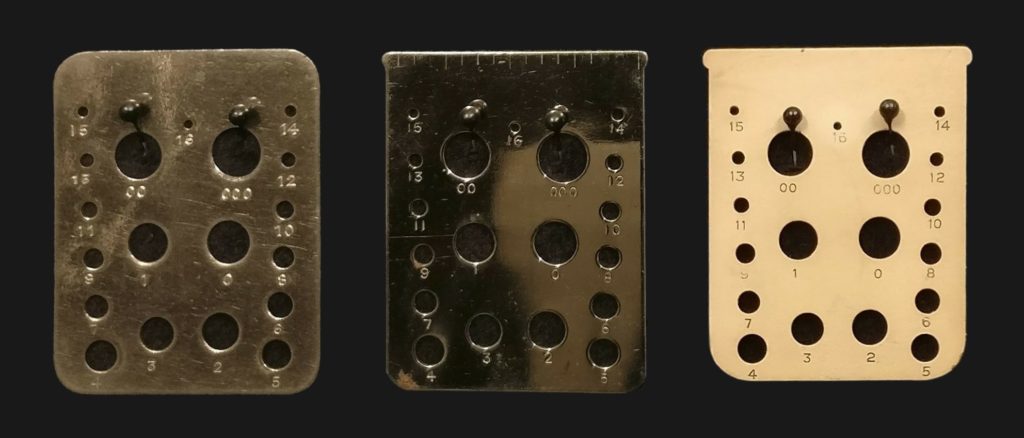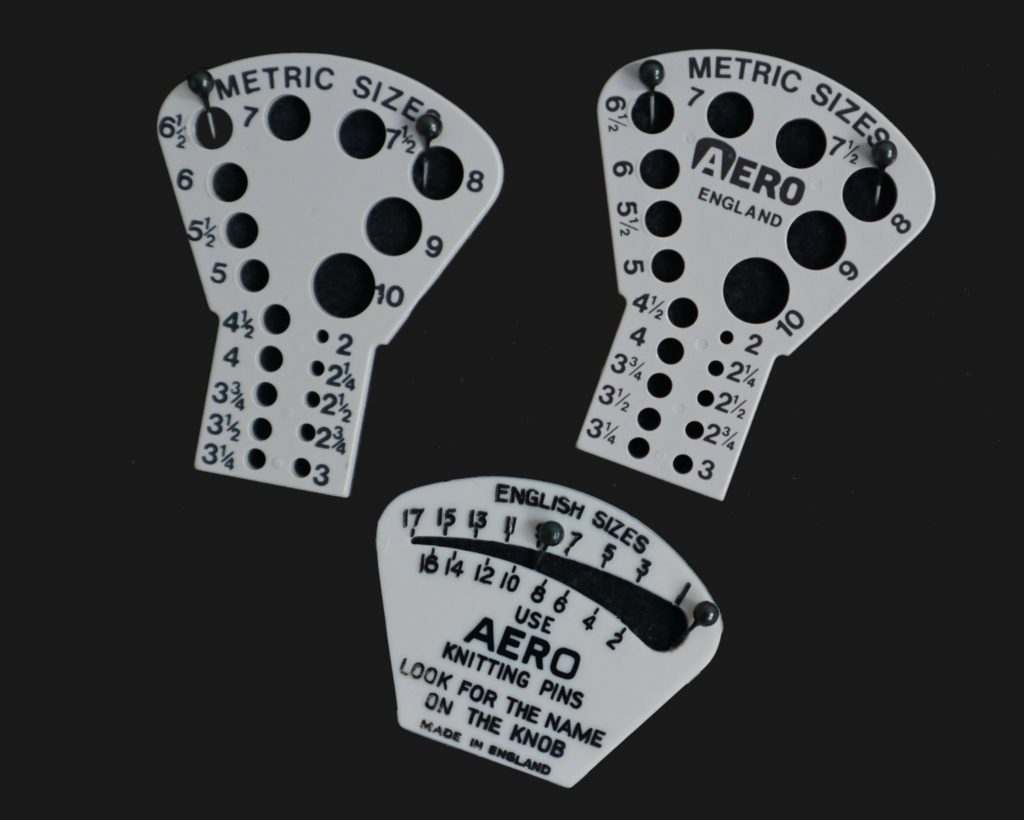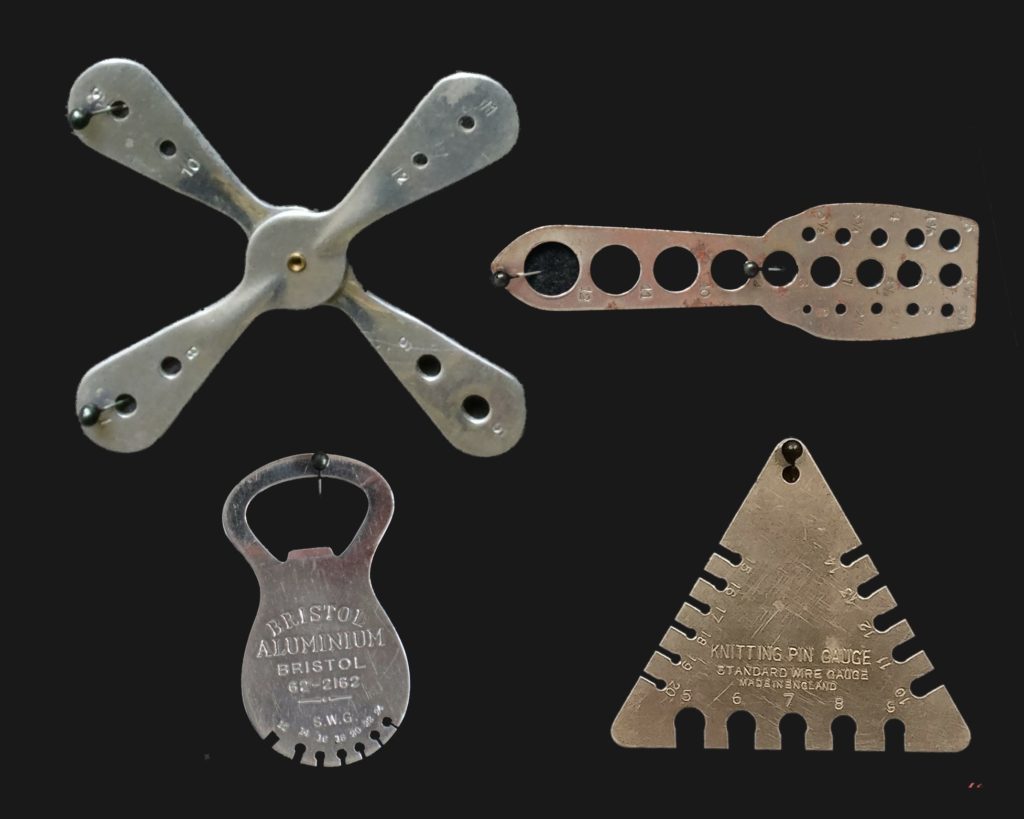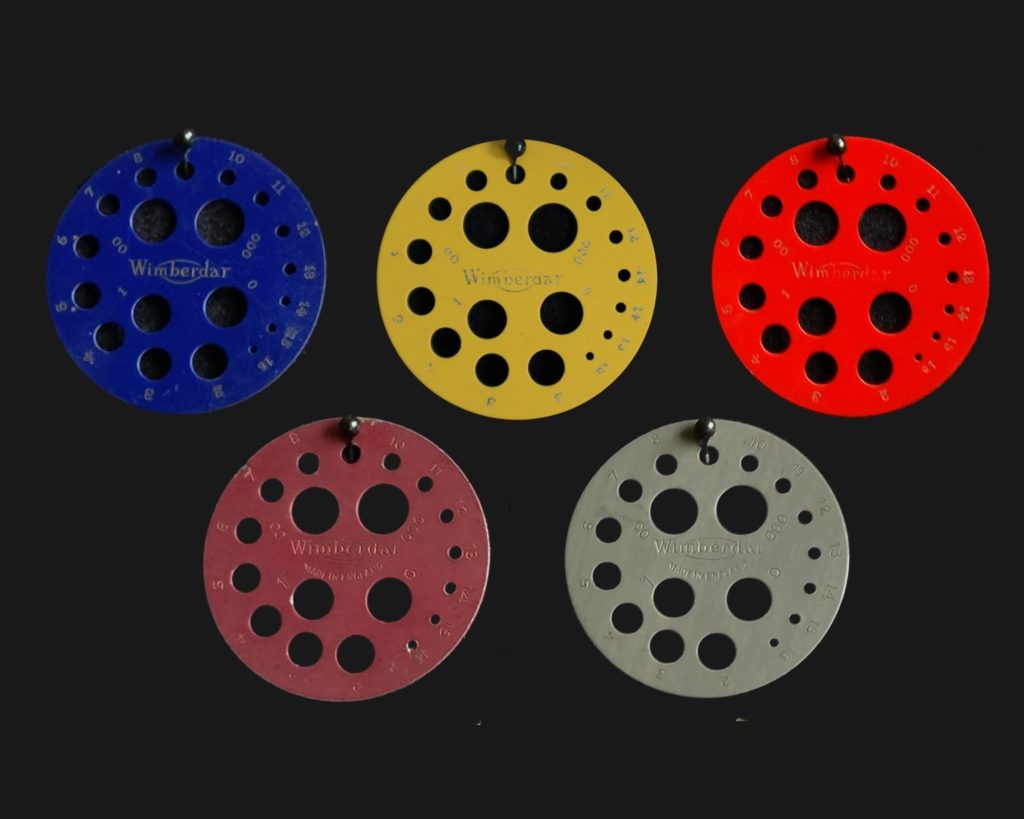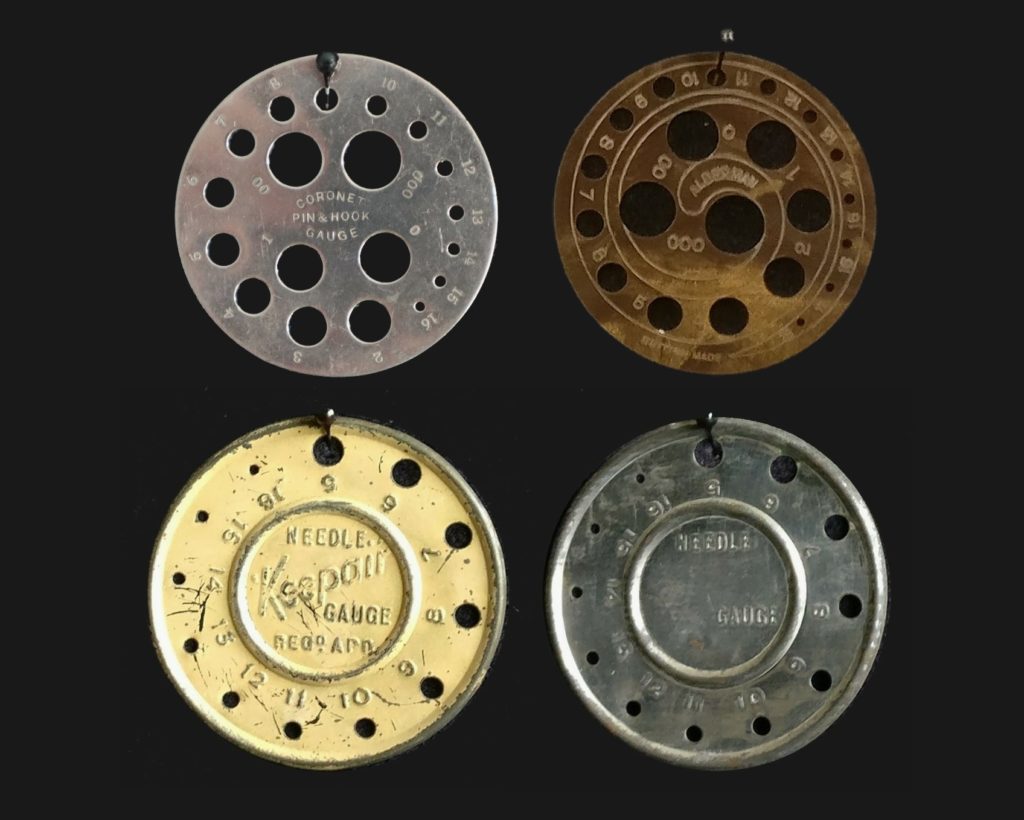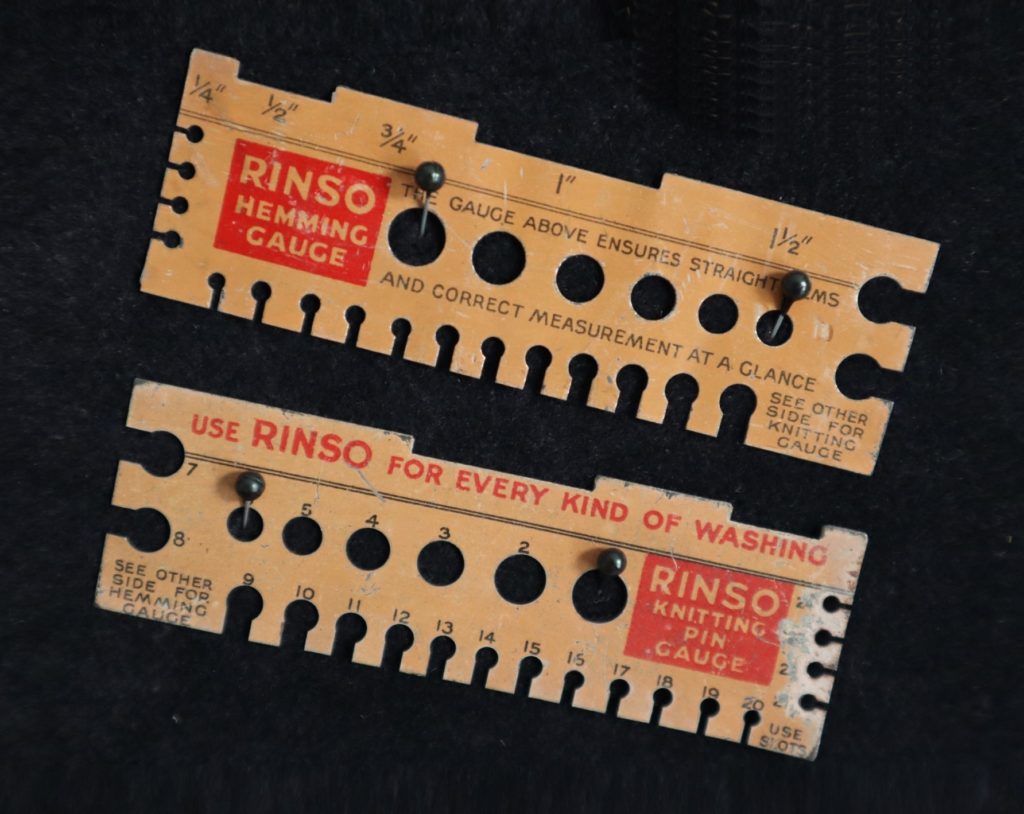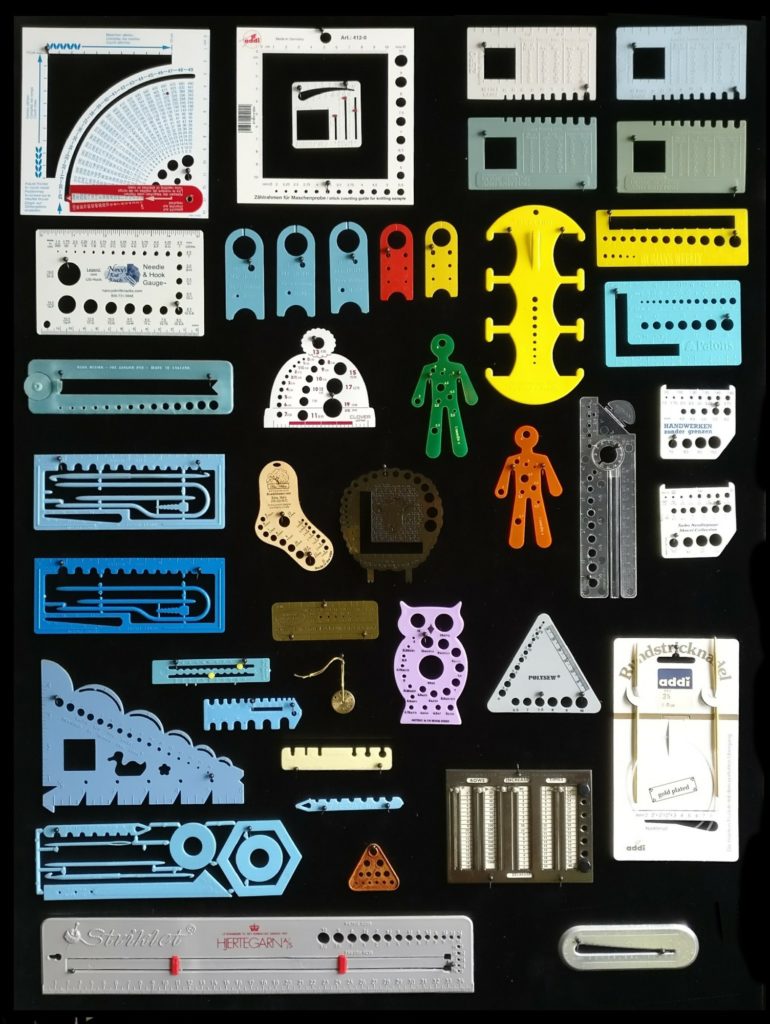
This is my last board of gauges. They tend to be oddments that didn’t quite fit with anything else. Most are plastic. Many were given away with various magazines.
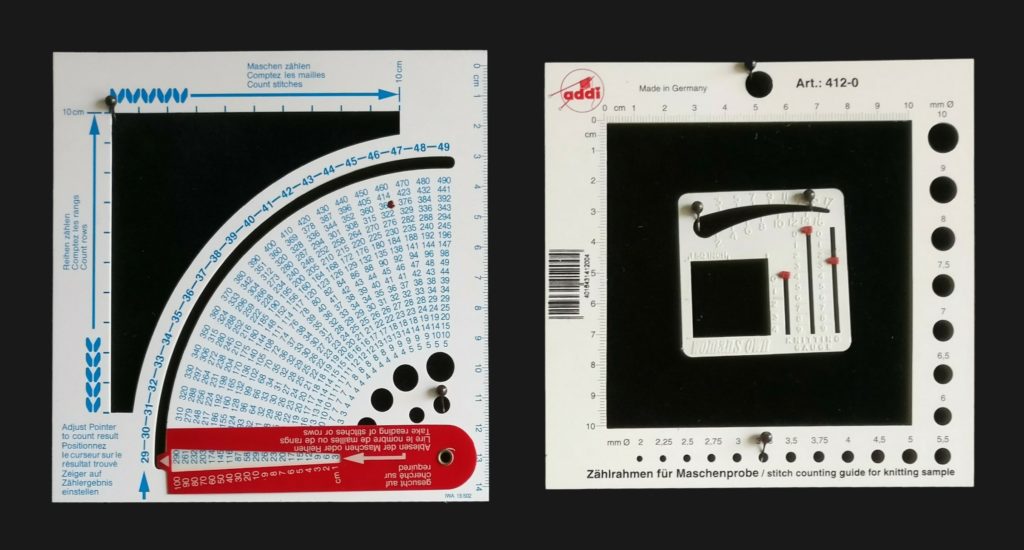
Inox Calculator + Counting Frame
This is quite complex. The holes are metric sizes from 1.5 mm to 10 mm. In the photo all the smaller sizes are under the red pointer so very few holes are easily accessible. All of the instructions are in English, French and German so it is very crowded. There are 10 cm rulers for rows and stitches, and another 14 cm ruler. On the pointer it says Take reading of stitches or rows and it is numbered from 1 to 10, then in tens up to 100. It points at numbers from 8 to 49. The instructions say:
- Example
- counted: 24 stitches at 10 cm
- adjust: pointer to 24
- required: number of stitches at 55 cm
- take at 50 cm = 120 stitches
- reading: at 5 cm = 12 stitches
- result: at 55 cm = 132 stitches
I think this assumes that you already know the width of the piece of knitting you want to make. You then count the number of stitches you knit in a 10 cm square and it calculates how many stitches you need in total.
Addi
A simple square with a 10 cm measuring square and holes from 2 mm to 10 mm.
Woman’s Own (Small square inside Addi)
Free with magazine. Slot for needle sizes is marked with UK sizes 1 to 17. On the back the metric sizes are 1½, 2, 2½, 3, 3½, 4, 4½, 5, 6, and 7. These don’t correspond to UK sizes and would be very difficult to use with any accuracy.
It also has a 1-inch/2.5 cm square and three sliders, with no labels. One is marked 0 to 4, the others 0 to 9.
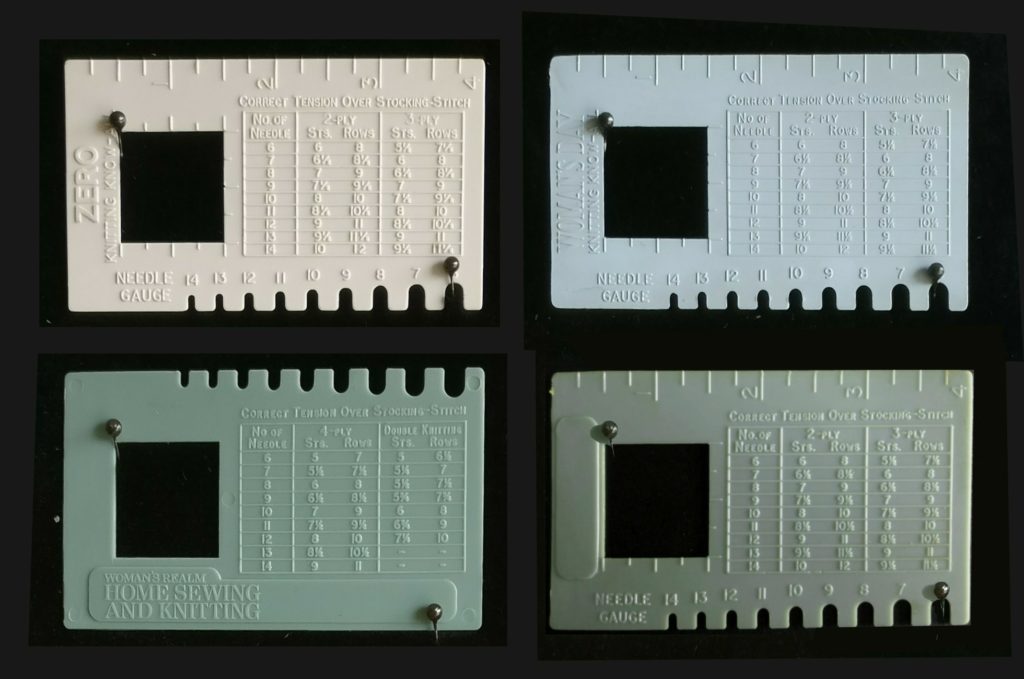
- Zero – safe for washing all woollens (I have never heard of Zero)
- Woman’s Day Knitting Know-all
- Woman’s Realm Home Sewing and Knitting (Two alike in slightly different colours)
These four are very similar. They were all given free. The information is the same on all. The slots are UK 6 to 14.There is a 1-inch hole and a 3-inch ruler. The tables are for No. of Needle, 2-Ply Stitches and Rows, 3-Ply Stitches and Rows, on one side, and for 4-Ply and DK on the back. The DK column for needle sizes 13 and 14 is blank.
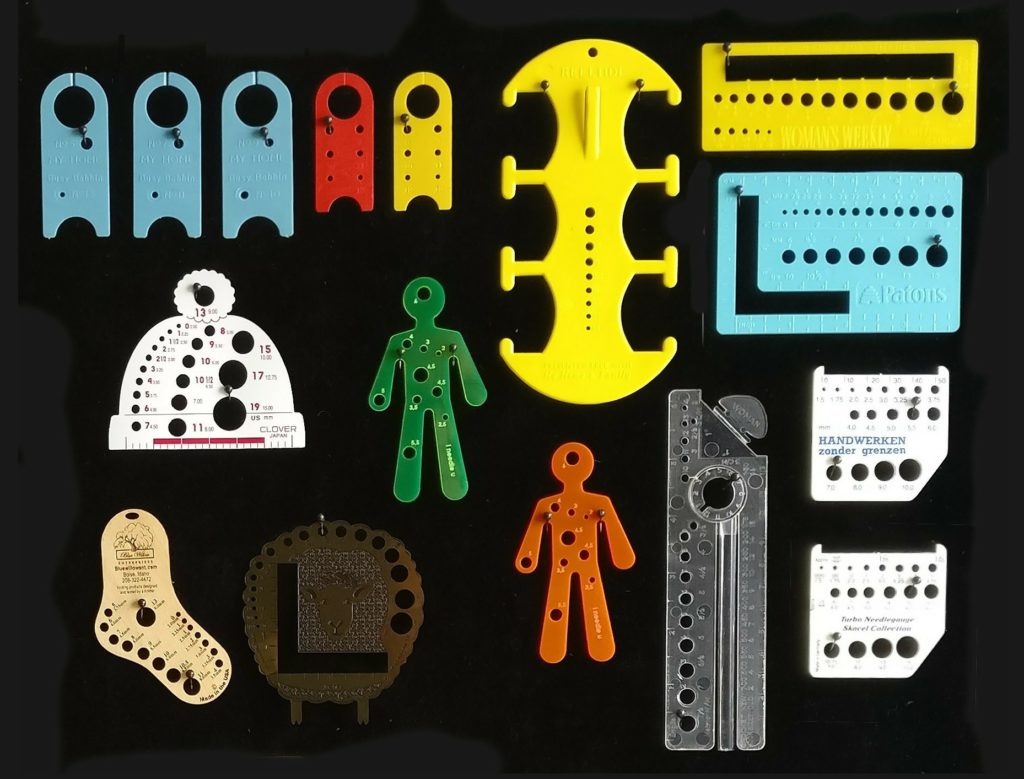
The first five are bobbins for winding small amounts of yarn onto – which would make them tricky for measuring needles. The blue ones are called My Home Busy Bobbin and have needle sizes 5 and 13, 7 and 11, and 9 and 10. I don’t know whether there were more to complete a set. The others are alike, with no name. The sizes are 8 to 13.
The curved yellow one is called Reetidi. I do not know how it was intended to be used, or what the protruding clip is for. It says Presented free with My Home & Family Patent applied for No 35858/66 The hole sizes are 6 to 14.
The yellow rectangle is from Woman’s Weekly. The holes are sizes 000 to 14, with metric equivalents. The 10 cm slot has small pointers at each cm.
Blue rectangle is Patons (with a small picture of a beehive). It has 2-inch measuring slits. The holes are metric sizes 2 mm to 10 mm, and also numbered with US sizes for needles, and letters for hooks.
The hat shape is Clover, from Japan. The sizes are US and metric, from 2 mm to 15 mm.
The two little I needle u people are alike. The holes sizes, which are randomly arranged are from 2 mm to 6 mm.
The sock shape is made of wood, which seems to have become a trend since the advent of laser cutting machines. It is by Blue Willow Enterprises of Idaho. It says Knitting products designed and tested by a Knitter. The holes are in metric and US sizes, from 2 mm to 9 mm. It is a little strange as it gives both 3.0 mm and 3.25 mm as being US size 3.
The metal sheep is Goose Pond 2004. It has metric and US sizes from 1.25 mm to 10 mm. It has 2-inch measuring slots.
The transparent rectangle is from Woman. It is probably intended to slide over a pattern to mark your place. It seems to have something missing from the circular ring of numbers, which go from 1 to 12. On one edge there are holes are numbered with metric and English sizes from 2 mm to 7½ mm, and a 6-inch ruler. Along the other edge it has the comparative sizes of new and old crochet hooks, and a 12 cm ruler.
The strangely shaped corner looks as though it could also have something missing. It also has a triangle marked with the part to the cut-out as 1″ and the uncut part as 3 cm.
The two white gauges are very similar. One is called Turbo Needlegauge Skacel Collection, the other is Handwerken zonder grenzen. They both have a blade that slides out of a channel on the back. Handwerken is marked with metric sizes; Turbo has metric and US sizes. Both are from 1.5 mm to 10 mm, but Turbo has one more hole. Interestingly Turbo says approx against its needle sizes. I have not seen this on any other gauge.
The measure at the top is in millimetres on the Handwerken and inches and millimetres on the Turbo.
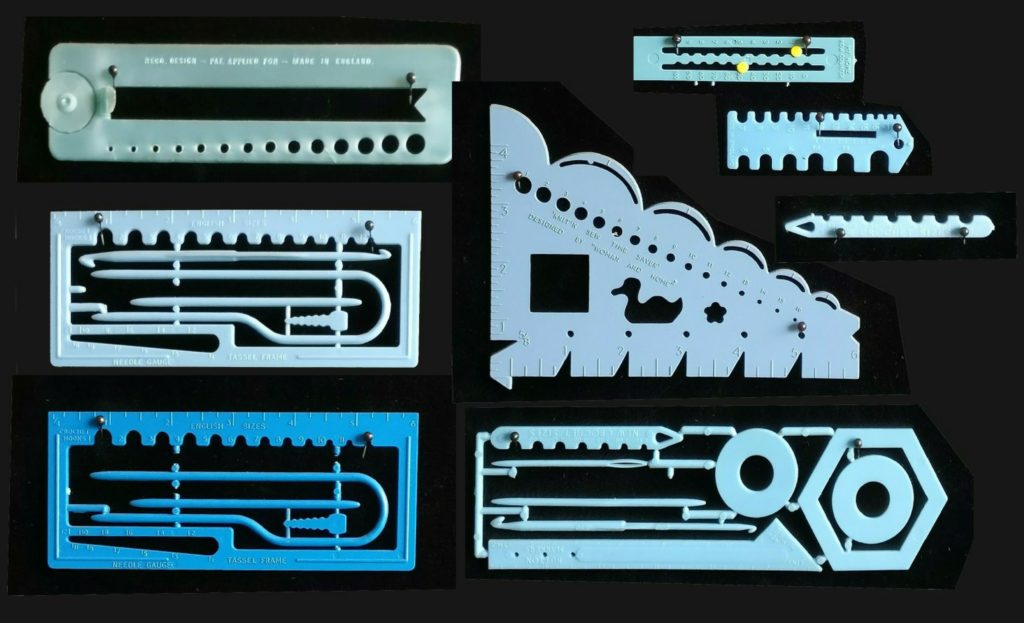
All of these were given away with magazines but are not all named. From the top down:
Regd. Design – Pat. Applied for – Made in England. It looks as though it originally had a piece to slide over a pattern. The dial on the end counts rows from 1 to 16. Hole sizes are 1 to 14. It has a 6-inch ruler.
The next two are alike, but different colours. One has a piece missing. The curves at the top are for measuring English Sizes crochet hooks from 1 to 12, on the front, with metric sizes on the back. The large slot at the bottom is for needles from 1 to 12. Unfortunately, on the pale blue version, the 1 is missing from 12 so it says 2. It has rulers on both sides and is also labelled as a Tassel Frame.
My Home Row Counter, with no measuring gauges.
Holes from 1 to 18 with a 1-inch measuring slot.
New Crochet Sizes 2.5 mm to 5.5 mm.
Knit’n Sew Time Saver Designed by Woman and Home. It has UK needle holes 1 to 16, a 4-inch ruler, a 1-inch square and various cut-outs for measuring scallops, seam allowances, button spacing, etc.
The crochet sizer above is part of one of these. The long pointed part at the bottom is labelled as 45° Mitre. It also has three holes marked as Button Markers. The functions of the other pieces can only be guessed at.

At the top are two metal miniature gauges. The flat one says Miniature Knitting & Rug Supplies and is from an address in Lancashire, UK. The holes are UK, US and metric. The metric sizes are from 0.50 mm to 2 mm. The heavy circular one is numbered 16 to 24.
Ganute (? script is difficult to read) – small triangle. Hole sizes numbered 1 to 15.
Polysew – large triangle. UK (000 to 14) on one side, metric on the other.
Owl shape (no name). Metric & US Hook Sizes. The labelling is quite complicated. Some holes have just a number; others have a number and letter e.g. 20&S; others have number, letter and number e.g. 6.5&K/10.5.
Woman. There are six slots labelled Tricot No.3, 2.50 + 2.00, 3.50 + 3.00, 4.50 + 4.00, 5.50 + 5.00, 7.00 + 6.00.
Stratnoid Made in England Pat. Pending. This was made in the 1950s and is unusual for that time as it has UK and metric labels.The slot measures from 1 to 16. It is different from other gauges with slots like this as it has notches for the needle sizes.
“MP” Handy Guide For Knitting & Crochet. British Made. Reg No 813814. People often think these are rare, perhaps because they are bigger and more elaborate than most gauges. In fact they turn up quite often in charity shops and car boot sales. They have lasted well because they are so substantial. They also came in a bronze colour.
The columns are headed Rows, Increase, Times. Instructions are on the back. The hole sizes are 6 to 12.
Addi circular needle card has a measuring slot for needles from 2 mm to 8 mm. I imagine this would soon get distorted if used.
Hjertegarn Made in Denmark. The holes are UK and metric from 2 mm to 10 mm. I do not know the purpose of the sliders, or why it has a hanging loop at the end.
These are the last of my knitting needle gauges. Click here to see all the others.
